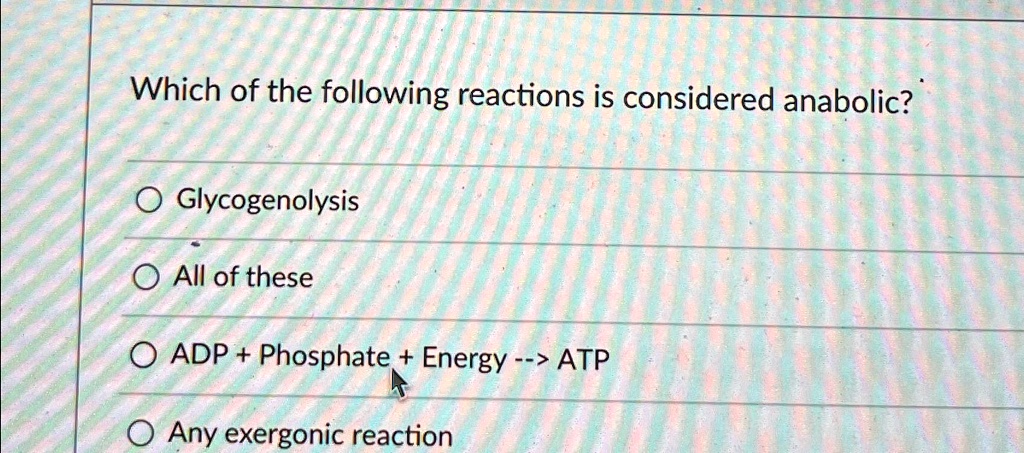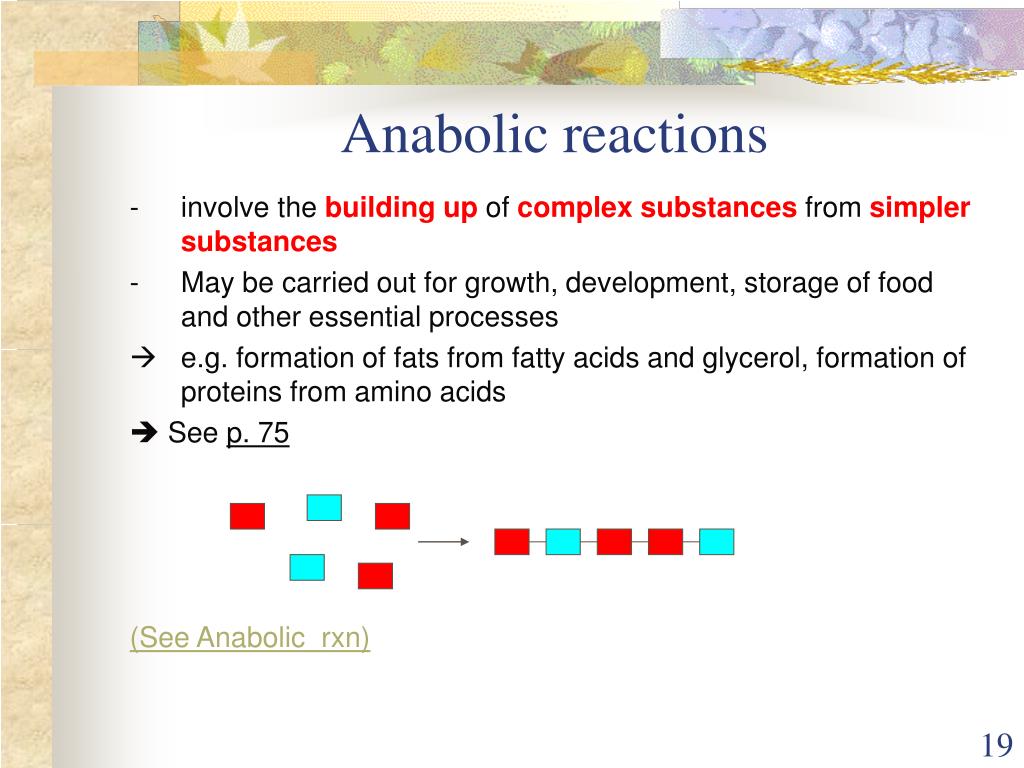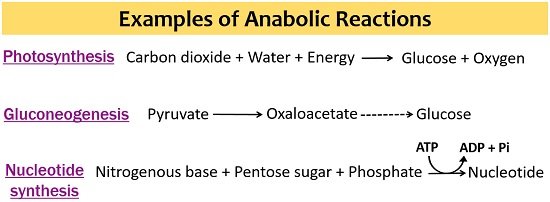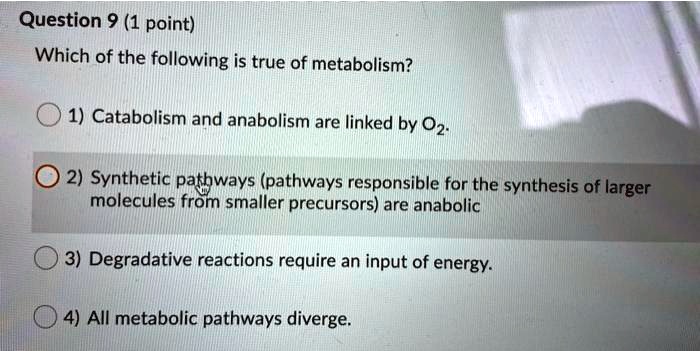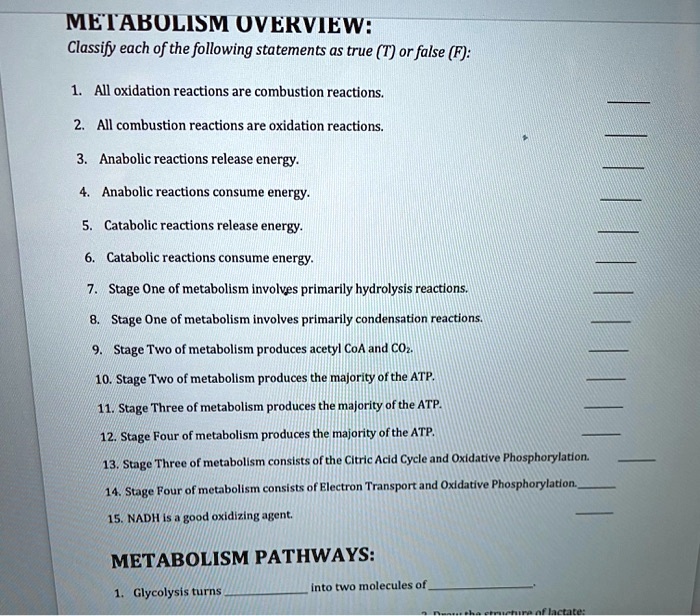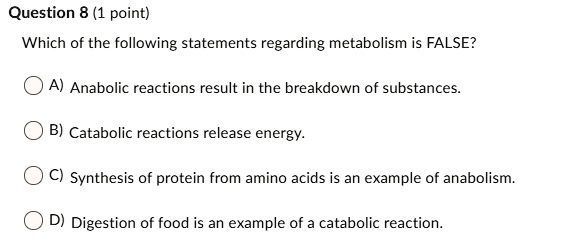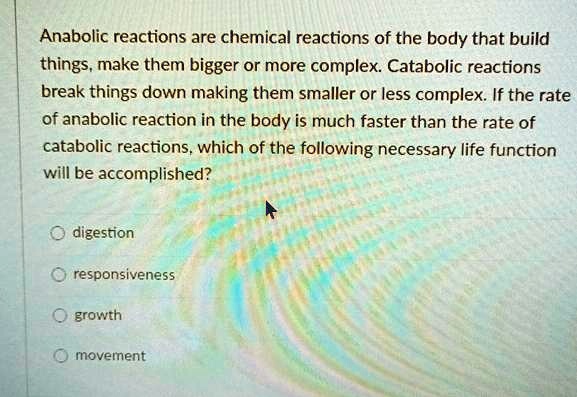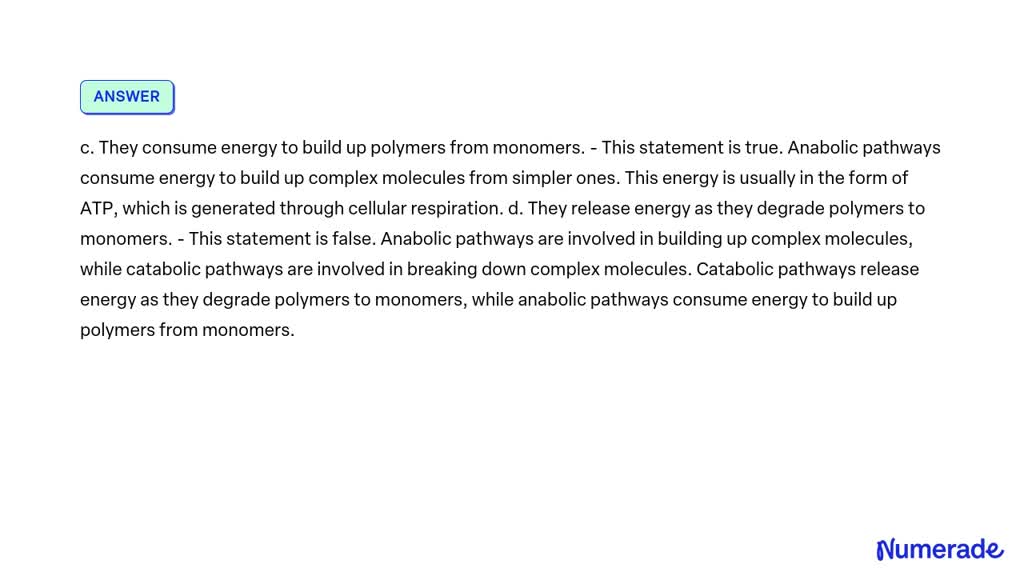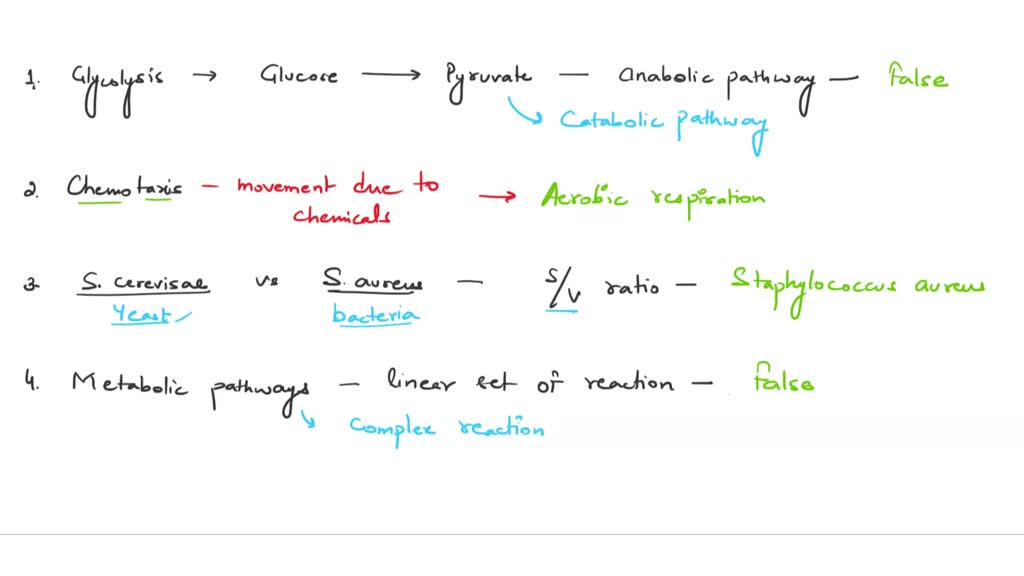Which Of The Following Is True Of Anabolic Reactions

The human body, a marvel of biological engineering, constantly engages in a complex dance of chemical reactions. Among these, anabolic and catabolic processes stand as fundamental pillars, shaping our growth, repair, and overall metabolic health.
Understanding the nuances of these reactions, particularly anabolism, is crucial for comprehending how our bodies build and maintain tissues, synthesize vital compounds, and store energy for future use.
This article will delve into the characteristics of anabolic reactions, dissecting their role in biological processes and dispelling common misconceptions.
Understanding Anabolic Reactions: The Building Blocks of Life
At its core, anabolism refers to the set of metabolic processes where simpler molecules are assembled into larger, more complex ones. This process, fueled by energy, is essential for growth, tissue repair, and the creation of vital compounds like proteins and nucleic acids.
Consider this the body's construction crew, actively building structures from raw materials.
Therefore, the true statement about anabolic reactions is that they require energy input to synthesize complex molecules from simpler precursors.
Key Characteristics of Anabolic Reactions
One of the most distinguishing features of anabolic reactions is their energy-consuming nature. These reactions are endergonic, meaning they require an input of energy, often in the form of ATP (adenosine triphosphate), to proceed.
This energy is used to create the chemical bonds that link the smaller molecules together, forming the larger, more complex structures.
Without this energy input, anabolic processes would simply not occur.
Anabolic reactions are also characterized by their synthetic nature. They build larger molecules from smaller ones. For instance, amino acids are linked together to form proteins, nucleotides are joined to form DNA and RNA, and glucose molecules are combined to form glycogen.
This synthesis is crucial for the creation of new cells, the repair of damaged tissues, and the production of enzymes and hormones.
Essentially, anabolism is the driving force behind growth and repair.
Furthermore, anabolic reactions often involve reduction reactions. In reduction reactions, a molecule gains electrons, leading to an increase in its potential energy.
This gain of electrons is coupled with the energy input, allowing the molecule to be built into a more complex structure.
For example, in photosynthesis, carbon dioxide is reduced to glucose, a process that requires significant energy input from sunlight.
Examples of Anabolic Reactions in the Body
Several crucial processes in the body exemplify anabolic reactions.
Protein synthesis, the process of creating proteins from amino acids, is a prime example. Ribosomes, the protein-building machinery of the cell, use the information encoded in mRNA to link amino acids together in a specific sequence.
This process requires energy in the form of ATP and GTP (guanosine triphosphate).
Glycogenesis, the synthesis of glycogen from glucose, is another vital anabolic process. Glycogen, a branched polymer of glucose, serves as a storage form of glucose in the liver and muscles.
When blood glucose levels are high, insulin stimulates glycogenesis, converting excess glucose into glycogen for later use.
This helps regulate blood sugar levels and provides a readily available source of energy.
DNA replication, the process of creating new DNA molecules from existing ones, is also an anabolic reaction. DNA polymerase, the enzyme responsible for DNA replication, uses existing DNA as a template to synthesize new DNA strands.
This process requires energy in the form of ATP and the building blocks of DNA, called nucleotides.
DNA replication is essential for cell division and the transmission of genetic information.
"Anabolic reactions are fundamental to life, driving growth, repair, and the synthesis of essential molecules." - Dr. Anya Sharma, Professor of Biochemistry
Anabolism vs. Catabolism: A Balancing Act
While anabolism builds complex molecules, catabolism breaks them down into simpler ones, releasing energy in the process. These two processes are constantly working in tandem to maintain homeostasis.
Catabolism provides the energy and building blocks needed for anabolism, while anabolism uses the energy and building blocks to create new structures and molecules.
The balance between anabolism and catabolism is crucial for maintaining health and preventing disease. For instance, athletes often focus on increasing anabolic processes to build muscle mass, while individuals trying to lose weight may focus on increasing catabolic processes to break down fat.
Anabolic reactions are heavily influenced by hormones. Insulin, for example, is a key anabolic hormone, promoting protein synthesis, glycogenesis, and lipogenesis (the synthesis of fats from glycerol and fatty acids). Conversely, cortisol, a stress hormone, is catabolic, promoting the breakdown of proteins and glycogen.
Understanding these hormonal influences is crucial for optimizing anabolic processes and maintaining metabolic health.
The Future of Anabolism Research
Research into anabolic reactions is ongoing, with scientists constantly seeking new ways to enhance these processes for therapeutic purposes. One area of interest is the development of drugs that can stimulate muscle growth in individuals with muscle-wasting diseases.
Another area of research focuses on understanding how anabolic pathways can be targeted to treat cancer. Cancer cells often rely on anabolic processes to fuel their rapid growth and proliferation, so inhibiting these pathways could be a potential therapeutic strategy.
As our understanding of anabolic reactions deepens, we can expect to see new and innovative approaches to treating a wide range of diseases and improving human health.
Furthermore, personalized nutrition strategies tailored to an individual's genetic makeup and metabolic profile are emerging.
This approach considers how different foods and nutrients affect anabolic and catabolic processes in specific individuals, allowing for optimized dietary recommendations that promote growth, repair, and overall well-being.
In conclusion, understanding anabolic reactions is paramount for comprehending the fundamental processes that sustain life. These energy-requiring processes are responsible for building and maintaining our tissues, synthesizing vital compounds, and storing energy.
By continuing to unravel the complexities of anabolism, we can unlock new opportunities for improving human health and combating disease.
From personalized nutrition to targeted therapies, the future of anabolism research holds immense promise for a healthier future.

